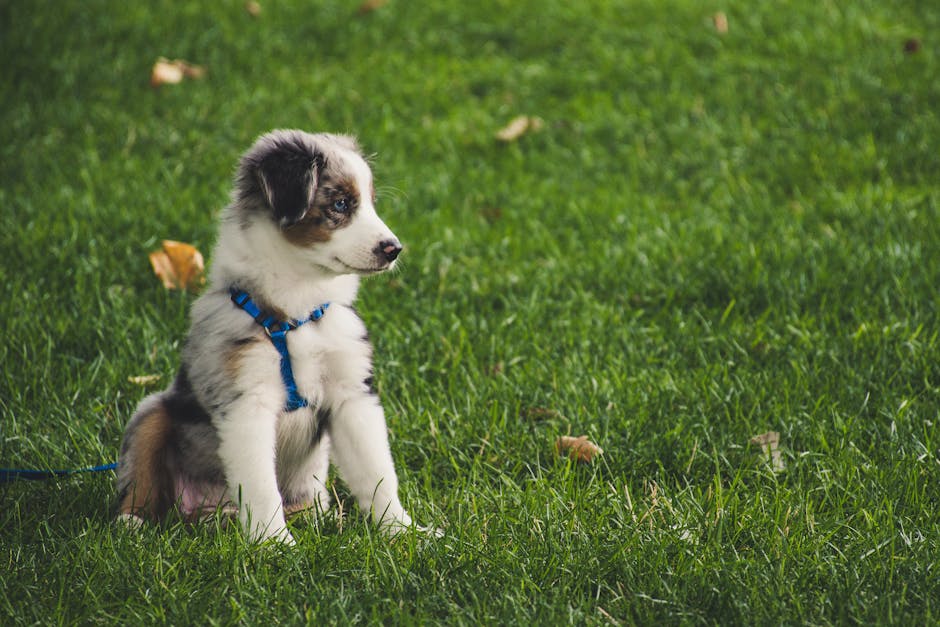How to Train Your Little Dog
Are you a proud owner of a small dog looking to embark on a training journey with your furry friend? Training a little dog comes with its unique challenges and rewards. From teaching basic commands to addressing behavioral issues, the process of training a small dog requires patience, consistency, and understanding. In this comprehensive guide, we will explore the ins and outs of how to train your little dog effectively. Let’s dive into the world of canine training and unleash the full potential of your pint-sized companion.
The Importance of Training Your Little Dog
Training your little dog is not just about teaching them to sit or stay; it is about building a strong bond based on trust and communication. Proper training can help your small dog become a well-behaved and socialized pet, making your life together more enjoyable. Additionally, training provides mental stimulation for your furry friend, keeping their mind sharp and preventing boredom-induced behavior problems.
Research has shown that trained dogs are happier and healthier than untrained ones. Training can also improve the safety of your small dog, as they will be less likely to engage in risky behaviors or run into dangerous situations. By investing time and effort into training your little dog, you are setting them up for a fulfilling and enriched life.
Setting the Foundation: Basic Training Principles
When it comes to training your little dog, consistency is key. Establish clear rules and boundaries from the start and be consistent in enforcing them. Use positive reinforcement techniques such as treats, praise, and play to motivate your small dog and reward good behavior. Avoid punishment-based training methods, as they can lead to fear and anxiety in your pet.
Start with teaching basic commands such as sit, stay, come, and down. Break down each command into small steps and practice them in short, frequent training sessions. Keep the training sessions fun and engaging to hold your small dog’s interest. Remember, every dog learns at their own pace, so be patient and understanding throughout the training process.

By Brett Sayles via Pexels
Socialization: The Key to a Well-Adjusted Small Dog
Socialization is a crucial aspect of training for small dogs. Exposing your furry friend to a variety of people, animals, and environments from a young age can help prevent fear and aggression issues later in life. Take your small dog on regular outings to the park, pet stores, and other dog-friendly places to help them become comfortable in different settings.
Arrange playdates with other small, friendly dogs to encourage positive social interactions and teach your pet proper canine manners. Monitor your dog’s body language during socialization to ensure they are comfortable and relaxed. Remember, socialization is an ongoing process that should continue throughout your small dog’s life.
Addressing Behavioral Challenges
Small dogs may exhibit certain behavioral challenges such as excessive barking, separation anxiety, or resource guarding. It is essential to address these issues early on to prevent them from becoming ingrained behaviors. Consult with a professional dog trainer or behaviorist if you are struggling to manage your small dog’s behavior effectively.
Use positive reinforcement techniques to modify unwanted behaviors and reward your small dog for displaying more desirable ones. For example, if your little dog barks excessively, teach them the “quiet” command and reward them for being silent. Consistency, patience, and understanding are key when addressing behavioral challenges in small dogs.

By Ryan Klaus via Pexels
Training Tips for Specific Breeds
Each small dog breed has its unique characteristics and traits that may influence their training needs. For example, terriers are known for their independent nature and may require extra motivation during training sessions. On the other hand, toy breeds like Chihuahuas may be sensitive to harsh training methods and respond better to gentle guidance.
Research your small dog’s breed characteristics to understand their temperament and behavior tendencies better. Tailor your training approach to suit your dog’s individual needs and preferences. Keep in mind that every dog is unique, so it is essential to adapt your training methods accordingly.
Training for Agility and Fun
Training your little dog for agility can be a fun and rewarding experience for both you and your pet. Agility training involves navigating an obstacle course with jumps, tunnels, weave poles, and other challenges. Not only does agility training provide physical exercise for your small dog, but it also strengthens the bond between you and your furry friend.
Start with basic agility equipment such as low jumps and tunnels and gradually increase the difficulty as your small dog gains confidence and skill. Use treats and praise to motivate your pet during agility training and make the experience enjoyable for them. Remember, the goal is not perfection but rather having fun and building a strong partnership with your small dog.
Expert Opinions: Insights from Professional Trainers
We reached out to several professional dog trainers for their expert insights on training little dogs. According to Sarah Johnson, a certified dog trainer, “Training small dogs requires patience and creativity. These pint-sized pups are often underestimated, but they are just as capable of learning and excelling in training as larger breeds.”
Another trainer, Michael Chen, emphasizes the importance of positive reinforcement in training small dogs. “Small dogs respond well to rewards-based training methods. By using treats and praise to motivate them, you can effectively teach them new behaviors and commands.”
Conclusion
Training your little dog is a worthwhile investment that can enhance the bond between you and your furry companion. By following the basic training principles, socializing your small dog, addressing behavioral challenges, and tailoring your approach to their breed-specific needs, you can help your pet become a well-behaved and happy member of your family.
Remember, training is an ongoing process that requires patience, consistency, and understanding. Celebrate your small dog’s successes, no matter how small, and be forgiving of their setbacks. With dedication and love, you can unlock the full potential of your little dog and enjoy a fulfilling and enriching relationship for years to come.

By Pixabay via Pexels
To wrap things up, training your little dog is a rewarding journey that can bring you closer together and create lasting memories. Embrace the challenges and joys of training, and watch as your small dog blossoms into a well-trained and well-rounded pet. Happy training!




